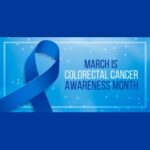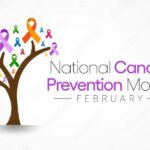Alcohol
Brief Description
 Ethyl alcohol, or ethanol, is an intoxicating ingredient found in beer, wine, and liquor. Alcohol is produced by the fermentation of yeast, sugars, and starches. It is a central nervous system depressant that is rapidly absorbed from the stomach and small intestine into the bloodstream. A standard drink equals 0.6 ounces of pure ethanol, or 12 ounces of beer; 8 ounces of malt liquor; 5 ounces of wine; or 1.5 ounces (a “shot”) of 80-proof distilled spirits or liquor (e.g. gin, rum, vodka, or whiskey).
Ethyl alcohol, or ethanol, is an intoxicating ingredient found in beer, wine, and liquor. Alcohol is produced by the fermentation of yeast, sugars, and starches. It is a central nervous system depressant that is rapidly absorbed from the stomach and small intestine into the bloodstream. A standard drink equals 0.6 ounces of pure ethanol, or 12 ounces of beer; 8 ounces of malt liquor; 5 ounces of wine; or 1.5 ounces (a “shot”) of 80-proof distilled spirits or liquor (e.g. gin, rum, vodka, or whiskey).
Brain:
Alcohol interferes with the brain’s communication pathways, and can affect the way the brain looks and works. These disruptions can change mood and behavior, and make it harder to think clearly and move with coordination.
Heart:
Drinking a lot over a long time or too much on a single occasion can damage the heart, causing problems including:
• Cardiomyopathy – Stretching and drooping of heart muscle
• Arrhythmias – Irregular heart beat
• Stroke
• High blood pressure
Research also shows that drinking moderate amounts of alcohol may protect healthy adults from developing coronary heart disease.
Liver:
Heavy drinking takes a toll on the liver, and can lead to a variety of problems and liver inflammations including:
• Steatosis, or fatty liver
• Alcoholic hepatitis
• Fibrosis
• Cirrhosis
Pancreas:
Alcohol causes the pancreas to produce toxic substances that can eventually lead to pancreatitis, a dangerous inflammation and swelling of the blood vessels in the pancreas that prevents proper digestion.
Cancer:
Drinking too much alcohol can increase your risk of developing certain cancers, including cancers of the:
• Mouth
• Esophagus
• Throat
• Liver
• Breast
Immune System:
Drinking too much can weaken your immune system, making your body a much easier target for disease. Chronic drinkers are more liable to contract diseases like pneumonia and tuberculosis than people who do not drink too much. Drinking a lot on a single occasion slows your body’s ability to ward off infections – even up to 24 hours after getting drunk.
Alcohol can disrupt fetal development at any stage during a pregnancy – including at the earliest stages and before a woman knows she is pregnant. Research shows that binge drinking, which means consuming four or more drinks per occasion, and regular heavy drinking put a fetus at the greatest risk for severe problems.
Fetal Alcohol Spectrum Disorders (FASD)
Drinking during pregnancy can cause brain damage, leading to a range of developmental, cognitive, and behavioral problems, which can appear at any time during childhood. Fetal Alcohol Spectrum Disorders (FASD) is the umbrella term for the different diagnoses, which include Fetal Alcohol Syndrome, partial Fetal Alcohol Syndrome, Alcohol-related neurodevelopmental disorder, and Alcohol-related birth defects.
People with FASD often have difficulty in the following areas:
• Coordination
• Emotional control
• School work
• Socialization
• Holding a job
In addition, they often make bad decisions, repeat the same mistakes, trust the wrong people, and do not understand the consequences of their actions.
Risk Factors
In addition to how much, how often, and in what stage of pregnancy a woman drinks, other factors can also play a role in how fetal alcohol exposure affects children. These factors include:
• Poor health and inadequate nutrition
• Living in a culture where binge or heavier drinking is common and accepted
• Little awareness of FASD
• Not receiving adequate prenatal care
• Social isolation
• Exposure to higher levels of stress
Interventions
Researchers and clinicians have developed some effective learning and behavioral interventions to help people living with FASD. They are also investigating new behavioral interventions, as well as dietary supplementation and physical therapy.
Underage drinking is a risk that attracts many developing adolescents and teens. When young people try alcohol, they often don’t realize the damaging effects drinking can have on their own lives, their families, and their communities.
Aside from being illegal, underage drinking is a widespread public health problem that poses many risks.
Here’s why:
Underage drinking is widespread
• In 2009, about 10.4 million young people between ages 12 and 20 drank more than “just a few sips” of alcohol.
• As kids get older, they drink more. By age 15, half of teens have had at least one drink. By age 18, more than 70% of teens have had at least one drink.
Young people drink a lot
• Young people drink less often than adults, but when they do drink, they drink more than adults.
• On average, young people have about 5 drinks on a single occasion, which can be considered binge drinking.
Underage drinking risks include:
•Death – 5,000 people under age 21 die each year from alcohol-related car crashes, homicides, suicides, alcohol poisoning, and other injuries such as falls, burns, and drowning.
•Serious injuries – More than 190,000 people under age 21 visited an emergency room for alcohol-related injuries in 2008 alone.
•Impaired judgment – Drinking can cause kids to make poor decisions, which can then result in risky behavior like drinking and driving, sexual activity, or violence.
•Increased risk for physical and sexual assault – Youth who drink are more likely to carry out or be the victim of a physical or sexual assault.
•Brain development problems – Research shows that brain development continues well into a person’s twenties. Alcohol can affect this development, and contribute to a range of problems.
Here’s how you can recognize the signs of underage drinking:
Anyone who interacts with young people should pay close attention to the warning signs that may indicate underage drinking. Some of these warning signs include:
• Academic and/or behavioral problems in school
• Changing groups of friends
• Less interest in activities and/or appearance
• Finding alcohol among a young person’s things or smelling alcohol on their breath
• Slurred speech
• Coordination problems
• Memory and/or concentration problems
Effects
 When a person drinks alcohol, the alcohol is absorbed by the stomach, enters the bloodstream, and goes to all the tissues. The effects of alcohol are dependent on a variety of factors, including a person’s size, weight, age, and sex, as well as the amount of food and alcohol consumed. The disinhibiting effect of alcohol is one of the main reasons it is used in so many social situations. Other effects of moderate alcohol intake include dizziness and talkativeness; the immediate effects of a larger amount of alcohol include slurred speech, disturbed sleep, nausea, and vomiting. Alcohol, even at low doses, significantly impairs the judgment and coordination required to drive a car safely. Low to moderate doses of alcohol can also increase the incidence of a variety of aggressive acts, including domestic violence and child abuse. Hangovers are another possible effect after large amounts of alcohol are consumed; a hangover consists of headache, nausea, thirst, dizziness, and fatigue.
When a person drinks alcohol, the alcohol is absorbed by the stomach, enters the bloodstream, and goes to all the tissues. The effects of alcohol are dependent on a variety of factors, including a person’s size, weight, age, and sex, as well as the amount of food and alcohol consumed. The disinhibiting effect of alcohol is one of the main reasons it is used in so many social situations. Other effects of moderate alcohol intake include dizziness and talkativeness; the immediate effects of a larger amount of alcohol include slurred speech, disturbed sleep, nausea, and vomiting. Alcohol, even at low doses, significantly impairs the judgment and coordination required to drive a car safely. Low to moderate doses of alcohol can also increase the incidence of a variety of aggressive acts, including domestic violence and child abuse. Hangovers are another possible effect after large amounts of alcohol are consumed; a hangover consists of headache, nausea, thirst, dizziness, and fatigue.
College Drinking Consequences
- Death: 1,825 college students between the ages of 18 and 24 die from alcohol-related unintentional injuries, including motor vehicle crashes (Hingson et al., 2009).
- Injury: 599,000 students between the ages of 18 and 24 are unintentionally injured under the influence of alcohol (Hingson et al., 2009).
- Assault: 696,000 students between the ages of 18 and 24 are assaulted by another student who has been drinking (Hingson et al., 2009).
- Sexual Abuse: 97,000 students between the ages of 18 and 24 are victims of alcohol-related sexual assault or date rape (Hingson et al., 2009).
- Unsafe Sex: 400,000 students between the ages of 18 and 24 had unprotected sex and more than 100,000 students between the ages of 18 and 24 report having been too intoxicated to know if they consented to having sex (Hingson et al., 2002).
- Academic Problems: About 25 percent of college students report academic consequences of their drinking including missing class, falling behind, doing poorly on exams or papers, and receiving lower grades overall (Engs et al., 1996; Presley et al., 1996a, 1996b; Wechsler et al., 2002).
- Health Problems/Suicide Attempts: More than 150,000 students develop an alcohol-related health problem (Hingson et al., 2002), and between 1.2 and 1.5 percent of students indicate that they tried to commit suicide within the past year due to drinking or drug use (Presley et al., 1998).
- Drunk Driving: 3,360,000 students between the ages of 18 and 24 drive under the influence of alcohol (Hingson et al., 2009).
- Vandalism: About 11 percent of college student drinkers report that they have damaged property while under the influence of alcohol (Wechsler et al., 2002).
- Property Damage: More than 25 percent of administrators from schools with relatively low drinking levels and over 50 percent from schools with high drinking levels say their campuses have a “moderate” or “major” problem with alcohol-related property damage (Wechsler et al., 1995).
- Police Involvement: About 5 percent of 4-year college students are involved with the police or campus security as a result of their drinking (Wechsler et al., 2002), and 110,000 students between the ages of 18 and 24 are arrested for an alcohol-related violation such as public drunkenness or driving under the influence (Hingson et al., 2002).
- Alcohol Abuse and Dependence: 31 percent of college students met criteria for a diagnosis of alcohol abuse and 6 percent for a diagnosis of alcohol dependence in the past 12 months, according to questionnaire-based self-reports about their drinking (Knight et al., 2002).
Source: NIDA (National Institute on Drug Abuse)











